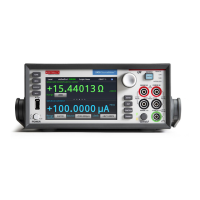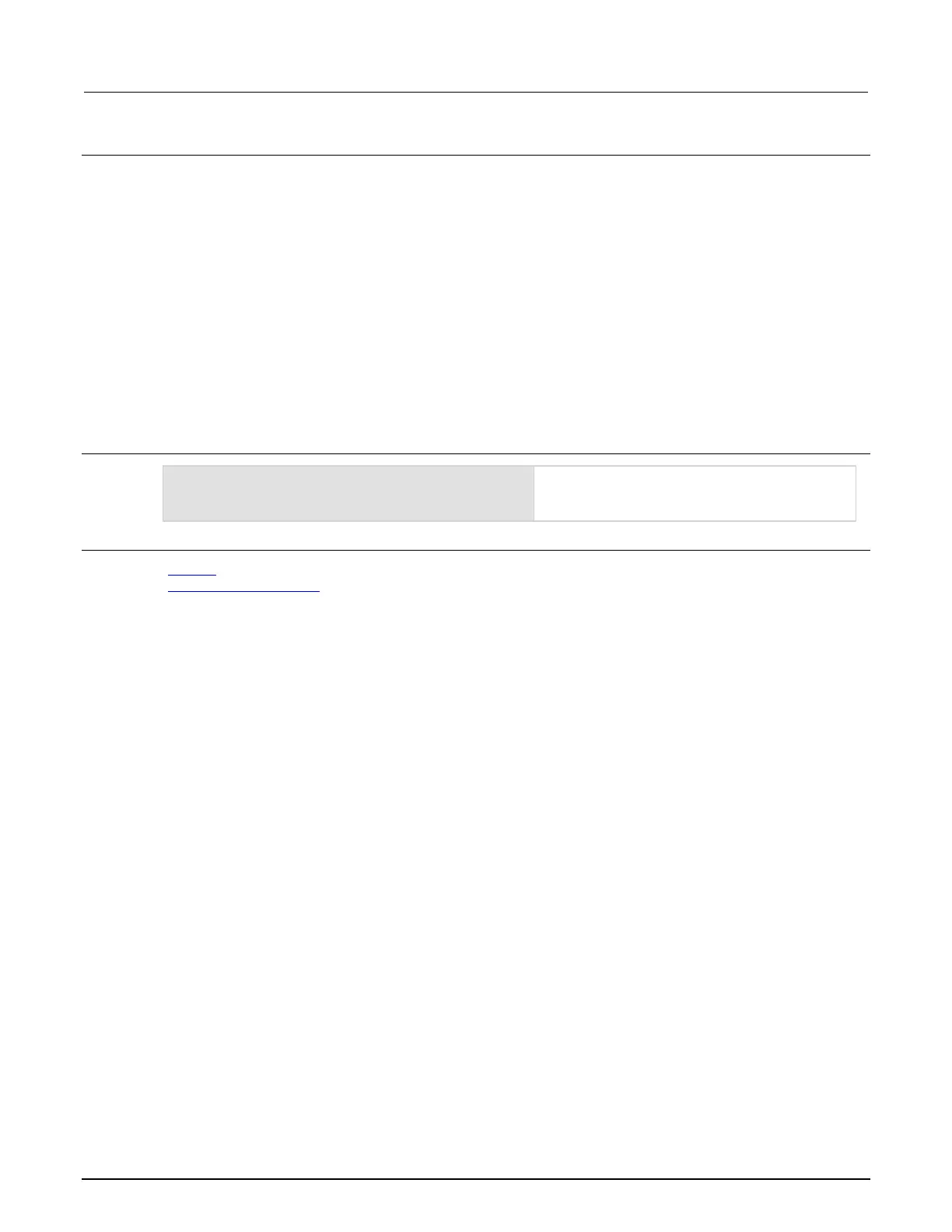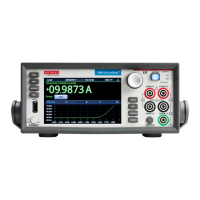8: TSP command reference Model 2450 Interactive SourceMeter® Instrument
8-118 2450-901-01 Rev. B/September 2013
Details
When you assign a range value, the instrument is set on a fixed range that is large enough to measure the
assigned value. The instrument selects the best range for measuring the maximum expected value.
This command is primarily intended to eliminate the time that is required by the instrument to select an automatic
range.
Note that when you select a fixed range, an overrange condition can occur.
If the source function is the same as the measurement function (for example, sourcing voltage and measuring
voltage), the measurement range is the same as the source range, regardless of measurement range setting.
However, the setting for the measure range is retained, and when the source function is changed (for example,
from sourcing voltage to sourcing current), the retained measurement range is used.
When you set a value for the measurement range, the measurement autorange setting is automatically disabled
for the measurement function.
When you read this setting, you see the positive full-scale value of the measurement range that the instrument is
presently using. If you change the range while the output is off, the instrument does not update the hardware
settings, but if you read the range setting, the return is the setting that will be used when the output is turned on.
If you set a range while the output is on, the new setting takes effect immediately.
Example
smu.source.func = smu.FUNC_DC_CURRENT
smu.measure.func = smu.FUNC_DC_VOLTAGE
Select the measurement function to be voltage.
Instrument selects the 2 V measurement range.
Also see
Ranges (on page 2-101)
smu.measure.autorange (on page 8-86)

